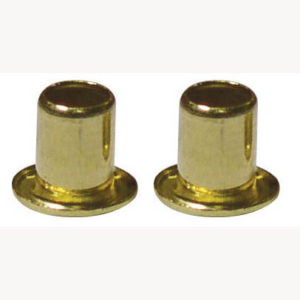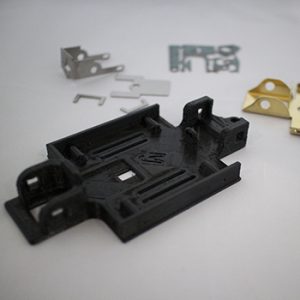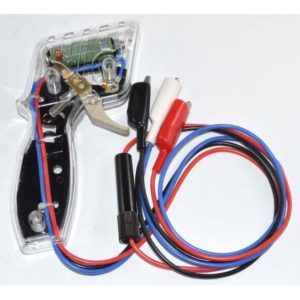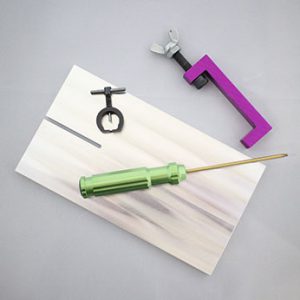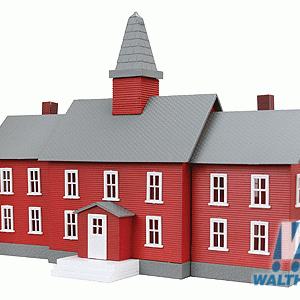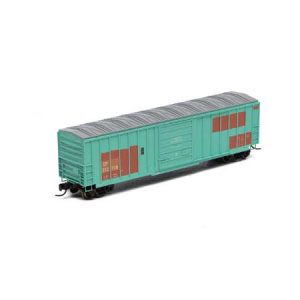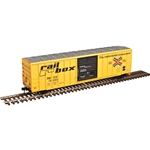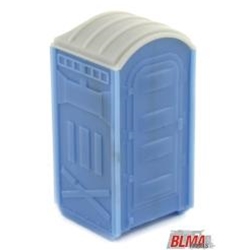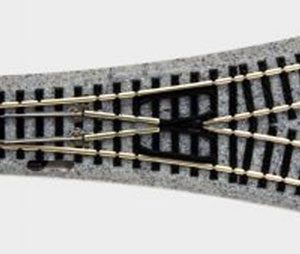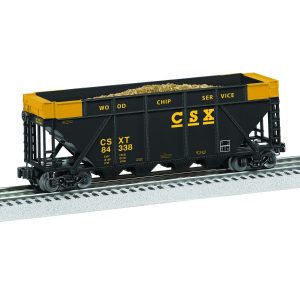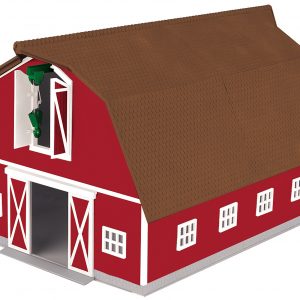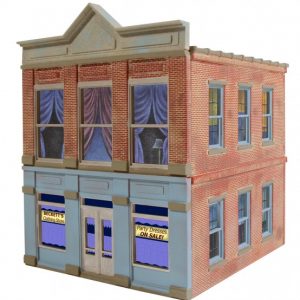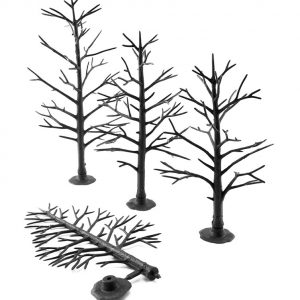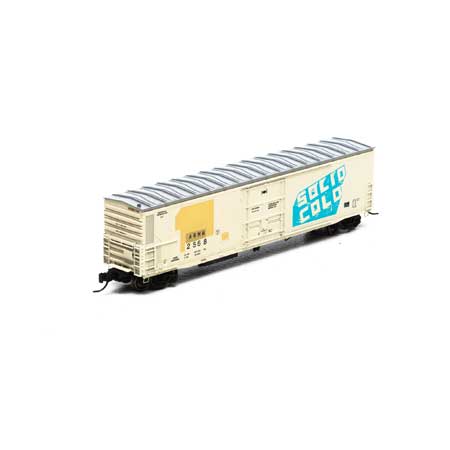Athearn N 57′ Mechanical Reefer, UP/ARMH/Solid Cold #2568
$29.98 $23.99
24798
Detailed Information
ROADNAME SPECIFIC FEATURES:
Union Pacific
ARMN FEATURES:
- Previous run: March 2015
- Phase I Modernized Body
- Exposed end mounted refrigeration unit
- Riveted sides/drop sill
- Door hangers
- Early rod-style coupler cut levers
ARMH FEATURES:
- New Paint Scheme
- T-shaped “smoke jack”
- Phase I Body
- Riveted sides/drop sill
- Door hangers
- Early rod-style coupler cut levers
Burlington Northern
BNFE (BROWN) FEATURES:
- New variant w/ full length roof
- T-shaped “smoke jack”
- Phase II Body
- Welded sides/drop sill
- Door hangers
- Early rod-style coupler cut levers
BNFE (YELLOW) FEATURES:
- New paint scheme: Yellow BNFE
- Phase II Body
- Early smoke jack with flapper
- Welded sides
- Door hangers
- Drop sill
Burlington Northern Santa Fe
BNSF FEATURES:
- New variant w/ full length roof
- T-shaped “smoke jack”
- Phase II Body
- Welded sides/drop sill
- Door hangers
- Early rod-style coupler cut levers
Tropicana
TPIX FEATURES:
- Phase I Late Body
- Early smoke jack with flapper
- Riveted sides
- Door hangers
- Drop sill
Fruit Growers Express
FGMR (AS DELIVERED) FEATURES:
- Phase III Body
- Early smoke jack with flapper
- Riveted sides
- No door hangers
- Straight sill
FGMR (REPAINT) FEATURES:
- New paint variant large Helvetica reporting marks and road numbers
- T-shaped “smoke jack”
- Phase I Body
- Riveted sides/drop sill
- Door hangers
- Early rod-style coupler cut levers
MODEL FEATURES:
- Available with onboard SoundTraxx sound
- Scaled from prototype manufacturer’s drawings and field measurements
- Two different exhaust stack types: straight pipe with “flapper” or T-shaped “smokejack” per prototype and era
- Underframe detail including Keystone cushioning, air brake reservoir, control valve, brake cylinder, and fuel tank
- Body mounted McHenry operating scale knuckle couplers
- Fully-assembled and ready-to-run
- Accurately painted and printed for prototypical realism
- Highly-detailed, injection-molded body
- Weighted for trouble free operation
- 100-ton roller bearing trucks with 36” machined metal wheels that operate on all Code 55 and 80 rail
- Clear plastic jewel box for convenient storage
- Minimum radius: 9 ¾”
- Recommended radius: 11”
SOUND EQUIPPED MODELS ALSO FEATURE:
- Sound recorded from actual genset
- Sound randomly cycles on and off
- Utilizes minimum track power
- Raise and lower the volume by adjusting the potentiometer
PRIMED FOR GRIME MODELS FEATURE:
- Duplicated look and feel of “In Service” equipment; “Tattered and Torn” just like the real thing
- Faded base colors matched to the prototype
- Patches applied and shaped per road number matching each corresponding side to the prototype
- Perfect starting point for adding grime and rust
PROTOTYPE AND BACKGROUND INFO:
One of the greatest freight car innovations of the 20th century was the creation of the refrigerator car, commonly referred to as a “reefer.” The ability to haul perishables such as fruits, vegetables and meat products across the country was a major factor in the development of modern America. No longer did food have to be produced close enough to urban areas, so that it could be consumed before spoiling. At the same time, areas with additional capacity for agricultural production could produce more food, since it did not have to be sold locally.
For many years, reefers relied on ice bunkers to keep loads cool. After World War II, technological advances made mechanical refrigeration practical for a freight car. In addition, a mechanical reefer could be larger than an ice reefer because of the greater cooling capabilities.
Fruit Growers Express owned the largest fleet of reefers in the East. FGE was owned by a group of ten railroads, with Atlantic Coast Line and Southern being two of the largest original owners. Many of FGE cars were built at its Jacksonville Shops, including these 57’ smooth-side mechanical reefers.
1 in stock


